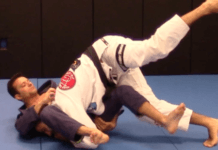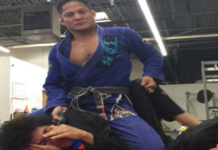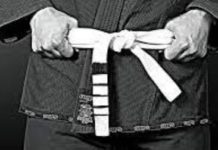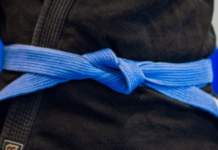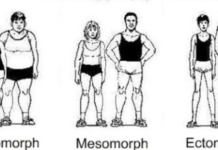Table of Contents
Probably at some point in your journey with martial arts you heard about Aikido. Maybe you even tried it in the past or you are considering cross train it with Brazilian Jiu Jitsu now. Regardless of the answer how are you connected with Aikido/why are you interested in it, it’s time to expand our knowledge. Below you will find all you need to know about differences and similarities between Aikido and BJJ.
Aikido
Before we start with differences and similarities it’s good to know basics. In this case, it would be knowing exactly what Aikido is and what are its origins. In short, it is Japanese martial art created by Morihei Ueshiba in the early twentieth century. Aikido was intended to serve as a self-defense art in which at the same time you are protecting the attackers from injury. Aikido’s techniques include entering and turning movements, (that are supposed to redirect the opponent’s attack), and various types of throws and joint locks.
Aikido origins
The creator of Aikido Morihei Ueshiba developed it mainly in the 1920s and 1930s. It was the synthesis of older martial arts he studied. The main martial art he drew from is Daitō-ryū. It is Japanese martial art best known for combat tactics in which the defender uses the force of an attacker’s attack to dominate him with his own dynamics. Even though Ueshiba also studied other martial arts such as Judo, Daitō-ryūt was his biggest inspiration while creating Aikido. This art is the primary technical influence on Aikido.
Simultaneously with throwing and joint locking techniques against non-armed opponents, Ueshiba included also training actions with weaponry. He taught defense against spears, short staffs, and possibly even the bayonet. Aikido’s technical structure also draws a lot from the art of swordsmanship. The name of this discipline became officially only in the year 1942. It was then when the Greater Japan Martial Virtue Society was engaged in a government-sponsored restructuring and concentration of Japanese martial arts. What else is worth adding, the creator of Aikido saw it not only as of the combination of his martial practice but also as an illustration of his personal philosophy focused on universal peace and reconciliation.
BJJ and Aikido similarities
Although at first glance Aikido and BJJ may seem quite different, they have more in common than you can think. Both are martial arts with Japanese origins developed at the beginning of the twentieth century. Which makes them both quite young sports. For some, it may be surprising but similarities can be also found in techniques and philosophy of both these disciplines.
When it comes to technique, both Aikido and BJJ are grappling martial arts. They were developed as self-defense martial arts against an attacker. Deep down they are both based on the idea of using the opponent’s force against them and using little to zero strength with the techniques. They both also share the love for putting leverages on the opponent’s joints. And when it is about philosophy, both Aikido and Brazilian Jiu Jitsu promotes the idea of living a life of peace, having respect for others and treating everyone equal. Not by accident jiu jitsu is referred to as a gentle art, right?
Aikido vs BJJ – differences
Despite similar roots and in some ways a way of thinking these both disciplines are of course different from each other. Some would even say that the differences are quite significant. So, how are they different exactly?
Belts
The belt ranking systems of Aikido and BJJ are both done by colors, but they are a little different. Aikido got six belt colors, in order, there are white, yellow, orange, blue, brown, and then the black one. In Brazilian Jiu Jitsu you got one rank less because there is only white, blue, purple, brown, and black belt. There is also a difference between these sports in how long it takes to get the black belt. Brazilian Jiu Jitsu got a bit more restrictive belt system than other martial arts, in this Aikido. It often takes over 10 years to get a black belt. When most people that practice Aikido regularly several times a week can expect a black belt in 4 to 5 years. Of course, this depends on their level of diligence and commitment to the practice, but still, it’s twice as short as in BJJ.
Training
A big difference is also the approach to training. BJJ is way much more “tested live” than Aikido. In Brazilian Jiu Jitsu you are practicing techniques, drilling different scenarios and submissions with training partners and then you can put it all into action during sparrings. Aikido in that matter is very linear. Students will practice pre-choreographed movements on one another like katas. These movements are supposed to mimic real-life situations and prepare the students to defend themselves, but these cases practiced on training don’t always really well reflect reality. BJJ’s effectiveness is much more measurable and verifiable here.
Uniforms
Despite both BJJ and Aikido are practiced in gis, there are few differences between uniforms. In both, you got a jacket, pants, and belt, but in Aikido you have also hakama. These are traditional Japanese very wide pants, which are worn on a gi. In some academies, they are not required for the beginners and are intended for people at a higher skill level. Even despite this, it still remains a big difference between these disciplines. In Brazilian Jiu Jitsu you don’t change your uniform after you get the higher belt. Moreover, Aikido and BJJ gis are different in the shape and length of the sleeves and pants.
In Brazilian Jiu Jitsu there is also a little more looseness when it comes to uniforms. For competitions, you got some regulations, but to training, you can practically wear whatever you want. In BJJ you have the freedom in color, patches, etc. While in Aikido it is all more symbolic. For example, hakama has seven pleats, five at the front and two at the back. Each of them symbolizes the virtue that Aikido practitioner should have. These values are kindness, justice, politeness, wisdom and intelligence, honesty and integrity, loyalty, and honor.
Competitions
It will be a short but significant difference. In BJJ you got a lot of tournaments, at various levels (countries, continent, worlds), organized by different federations (IBJJF, UAEJJF), etc. You don’t have it all in Aikido. It is strictly a self-defense only martial art. Having a competition would be against the principle the art was founded upon.
In conclusion
Despite roots from the same country and few similarities BJJ and Aikido are kinda from different worlds. There are more significant differences than similarities. However, this is no reason to delete Aikido from our thinking completely. It could be still beneficial to cross train it with Brazilian Jiu Jitsu. Its more traditional and calm climate can be a nice change for BJJ.




